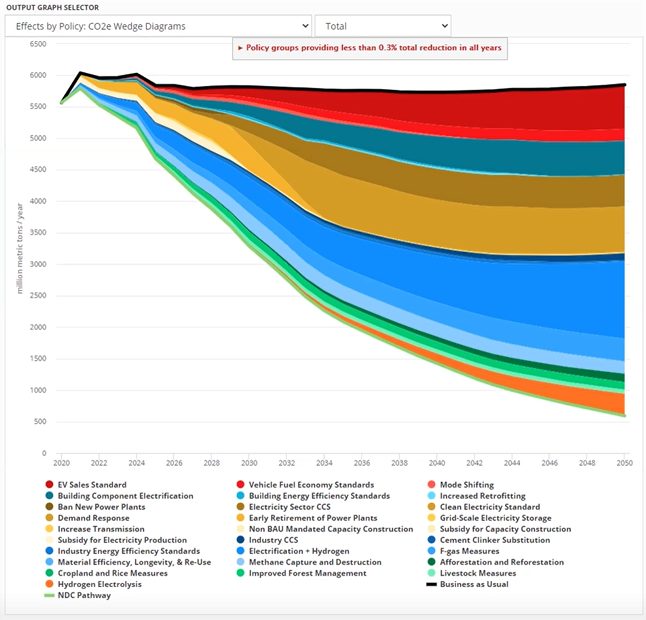By Robbie Orvis
The free and open-source Energy Policy Simulator (EPS) computer model developed by Energy Innovation Policy & Technology LLCTM has become one of the most widely used tools to inform policymakers and regulators about which climate and energy policies will reduce greenhouse gas emissions most effectively, creating the largest economic and public health benefits.
With EPS models now used in 10 countries and 48 states across America, we’re often asked how the EPS works and what peer review it has undergone through its development.
 The EPS is a System Dynamics computer model created in Vensim, a tool produced by Ventana Systems for the creation and simulation of System Dynamics models. The model is designed to be used with the free Vensim Model Reader, and directions on obtaining Vensim Model Reader and the EPS are available on the Download and Installation page. As an open-source modeling tool, users can access the model via the energypolicy.solutions website. To use advanced features or modify its input data, users may download the EPS and run it locally on their Mac or Windows PC. All of the input data is meticulously cited, publicly available, and freely accessible and editable, with results updated instantly.
The EPS is a System Dynamics computer model created in Vensim, a tool produced by Ventana Systems for the creation and simulation of System Dynamics models. The model is designed to be used with the free Vensim Model Reader, and directions on obtaining Vensim Model Reader and the EPS are available on the Download and Installation page. As an open-source modeling tool, users can access the model via the energypolicy.solutions website. To use advanced features or modify its input data, users may download the EPS and run it locally on their Mac or Windows PC. All of the input data is meticulously cited, publicly available, and freely accessible and editable, with results updated instantly.
The EPS allows users to model numerous policies that affect energy use and emissions including a renewable portfolio standard, fuel economy standards for vehicles, industry methane standards, incentives for clean energy technologies like we see in the Inflation Reduction Act, and accelerated R&D advancement of various technologies. These policies can be applied across every major sector of the economy including transportation, electricity supply, buildings, industry, agriculture, and land use. The EPS also includes smaller components like hydrogen supply, district heat, waste management, and geoengineering.
The model reports outputs at annual intervals and provides numerous outputs, including:
- Emissions of 12 different pollutants including carbon dioxide, nitrogen oxides, sulfur oxides, and fine particulate matter, as well as carbon dioxide equivalent (CO2e) which measures the global warming potential of various pollutants.
- Direct cash flow (cost or savings) impacts on government, non-energy industries, labor and consumers, and five energy-supplying industries.
- Direct, indirect, and induced impacts on jobs, GDP, and employee compensation, as a whole or disaggregated into 36 economic categories.
- Premature mortality and 10 other health-related outcomes avoided from reduced primary and secondary particulate pollution.
- The composition and output of the electricity sector (e.g., capacity and generation from coal, natural gas, wind, solar, etc.).
- Vehicle technology market shares and fleet composition including electric vehicles.
- Energy use by fuel type from various energy-using technologies including specific types of vehicles and building components.
- Breakdowns of how each policy within a policy package contributes to total abatement and the cost-effectiveness of each policy (e.g., wedge diagrams and cost curves).
- Fuel imports and exports, and associated expenditures or revenues.
All methodologies underpinning the EPS have undergone extensive peer review as they were developed, and we continually seek input from outside experts to modify the methodologies to address any concerns that are raised. Components of the model have been reviewed by individuals from prestigious institutions including:
- American Council for an Energy-Efficient Economy
- Argonne National Laboratory
- Lawrence Berkeley National Laboratory
- Massachusetts Institute of Technology
- National Renewable Energy Laboratory
- RMI
- Stanford University
- Tufts University
- University of Chicago
- U.S. Environmental Protection Agency
- World Resources Institute
